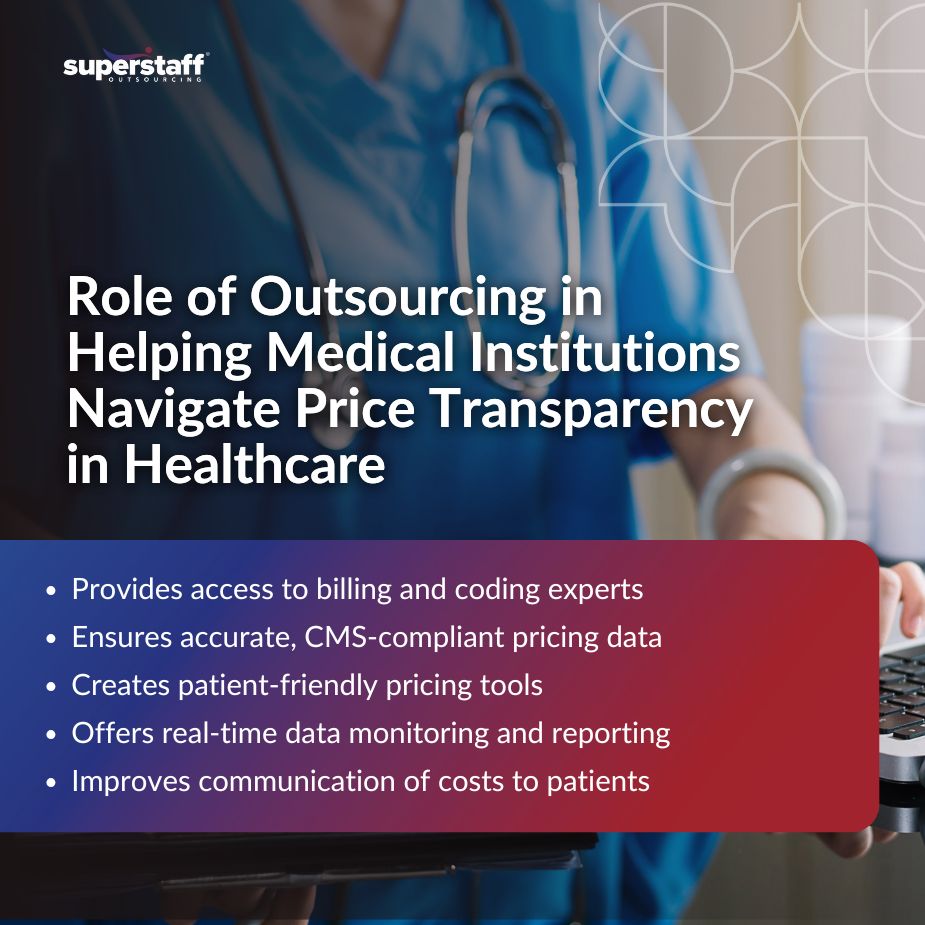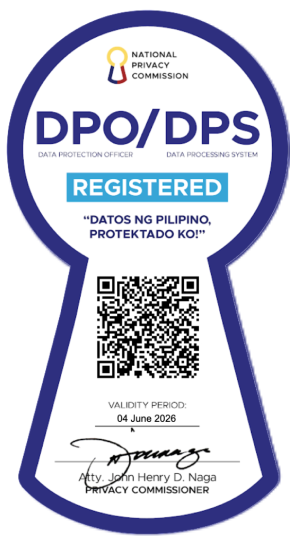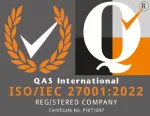
Healthcare costs are notoriously opaque—until now.
With the federal government mandating more visibility into what patients pay, the landscape of medical billing is undergoing a seismic shift. Through the Price Transparency Healthcare Executive Order, the U.S. aims to make price transparency in healthcare a standard, not a luxury. Hospitals and medical institutions are now required to disclose service costs in a consumer-friendly format, empowering patients to compare prices and make more informed decisions.
While this policy is a step forward for patient rights, it’s also a new operational challenge for providers. From organizing vast amounts of billing data to ensuring accurate coding and communication, institutions must overhaul long-standing processes to comply. Non-compliance can result in severe penalties, reputational damage, and a loss of trust.
Understanding the scope of this policy is essential for both compliance and long-term sustainability.
This blog breaks down what the Price Transparency Executive Order demands, what it means for your medical institution’s day-to-day operations, and how outsourcing critical support functions, like billing, coding, and data reporting, can help you stay compliant while focusing on patient care.
What is the Healthcare Price Transparency Executive Order?
On February 25, 2025, President Donald J. Trump signed an Executive Order. The goal of this new legislation was to facilitate more transparent healthcare pricing. This directive mandates the Departments of the Treasury, Labor, and Health and Human Services to enforce and expand upon the price transparency regulations initially introduced in 2019.
Key Provisions:
- Mandatory Disclosure of Actual Prices: Hospitals and insurers are required to publicly disclose the actual prices of healthcare services, including prescription drugs, rather than estimates.
- Standardization and Comparability: The order calls for the standardization of pricing information to ensure comparability across different hospitals and insurers.
- Enhanced Enforcement: Federal agencies are instructed to update their enforcement policies to ensure compliance with transparency requirements.
Anticipated Benefits:
- Cost Savings: According to industry analysts, these transparency measures could potentially help consumers, insurers, and employers save up to $80 billion within the year.
- Empowered Consumers: By having access to clear pricing information, patients can make more informed decisions, potentially leading to significant personal savings.
- Market Competition: Transparency is expected to foster competition among healthcare providers, potentially leading to lower prices and improved quality of care.
President Trump emphasized that this initiative is part of his broader commitment to put American patients first by promoting transparency and accountability within the healthcare system.
These mandates fall under the broader umbrella of healthcare pricing regulations 2025, which continue to evolve in response to increasing government and consumer scrutiny.
Now that we’ve unpacked the basics, let’s talk about what this means operationally.
What Does Price Transparency Mean for Your Healthcare Institution?
This executive order isn’t just about publishing price lists. It requires a fundamental shift in how institutions collect, structure, and disseminate information, and that shift is substantial.
Key Operational Challenges:
- Administrative Burden: Revenue cycle and billing teams must now retrieve and maintain extensive amounts of pricing data across various services, payer contracts, and departments.
- Increased Need for Accurate Medical Coding: Errors in coding can lead to misrepresented pricing and regulatory breaches.
- Simplifying Pricing Structures: Many institutions have complex pricing models that now need to be streamlined for public understanding.
This adds new layers of responsibility to already stretched internal teams. The pressure to comply with medical billing transparency requirements and other changing regulations is real—and growing.
Implementing these changes requires time, tools, and talent—but you don’t have to go it alone.

The Role of Outsourcing in Navigating Compliance
Outsourcing is emerging as a strategic solution for healthcare institutions seeking to manage these demands efficiently.
How Outsourcing Helps:
- Outsourced Billing Teams: These professionals are not just data entry clerks—they are trained specialists familiar with CMS definitions, coding systems, and payer contracts. They ensure that pricing data is pulled from accurate sources, categorized correctly, and aligned with what patients will see. This reduces the risk of regulatory missteps and supports more reliable internal financial forecasting.
- Data Analytics Services: Maintaining machine-readable files and shoppable pricing tools requires technical know-how and consistent updates. Outsourcing partners with analytics capabilities can create automated systems that sync with electronic health records and billing software. These tools don’t just help meet regulatory requirements—they also offer valuable insights into pricing trends, service utilization, and revenue cycle performance.
- Patient Communication: It’s not enough to comply with the rules; the pricing data must also be understandable to the average patient. BPO providers with healthcare communication experience can create user-friendly content and tools, such as pricing portals or interactive service estimators. This empowers patients and helps providers build trust and satisfaction through clear and accessible communication.
By leveraging specialized third-party expertise, healthcare providers can focus on clinical care while staying compliant with healthcare pricing regulations 2025.
Compliance is only part of the story—price transparency can also be a strategic advantage.
How Transparency Can Improve Patient Trust and Institutional Reputation
Price transparency isn’t just a mandate—it’s a market differentiator.
Strategic Benefits:
- Improves Patient Trust: Transparent pricing builds credibility with patients, particularly those seeking affordable care options.
- Supports Value-Based Care: Institutions aligned with transparent, outcome-driven models are more likely to be seen as trustworthy and modern.
- Enhances Competitiveness: In a world of increasing healthcare consumerism, transparency makes your institution stand out from the crowd.
In a landscape driven by choice and information, price transparency healthcare efforts can attract new patients and foster loyalty.
However, to reap these benefits, institutions must effectively navigate the risks.
Risks of Non-Compliance—and How to Mitigate Them
Non-compliance isn’t just a technical issue—it’s a business risk.
Compliance Consequences:
- Civil Penalties: The CMS is actively enforcing rules with significant fines.
- Reputation Management Issues: Negative media coverage or public shaming can severely damage your brand.
- Operational Disruptions: Incomplete or inaccurate data can disrupt patient billing cycles and cause confusion.
Mitigation Strategy:
Outsourcing partners bring ongoing monitoring, audit-ready processes, and continuous updates to stay on top of evolving price transparency healthcare regulations.
With the proper support, you can turn a regulatory obligation into an operational upgrade.
Why Forward-Looking Institutions Are Turning to BPO for Compliance Support
Many healthcare organizations are already seeing the value of partnering with outsourcing providers.
Why BPO Works:
- Cost Efficiency: Access to highly trained billing and coding professionals at a lower cost.
- Scalability: Teams can scale up quickly to handle large data tasks or regulatory changes.
- Tech-Enabled Delivery: Advanced tools ensure up-to-date compliance while reducing manual errors.
BPO providers act as extensions of your internal teams, helping you navigate what hospitals need to know about price transparency rules without overburdening your staff.
Ready to future-proof your compliance strategy?
From Mandate to Advantage: Embracing Price Transparency Healthcare With SuperStaff
The Price Transparency Executive Order presents both a challenge and an opportunity.
From understanding complex healthcare pricing regulations 2025 to implementing systems for medical billing transparency, specialty healthcare outsourcing offers a practical, scalable solution. It helps institutions manage risk, increase operational agility, and enhance patient satisfaction through better information.
Contact SuperStaff today to learn how we can help your healthcare institution meet transparency mandates while optimizing its long-term operations.






